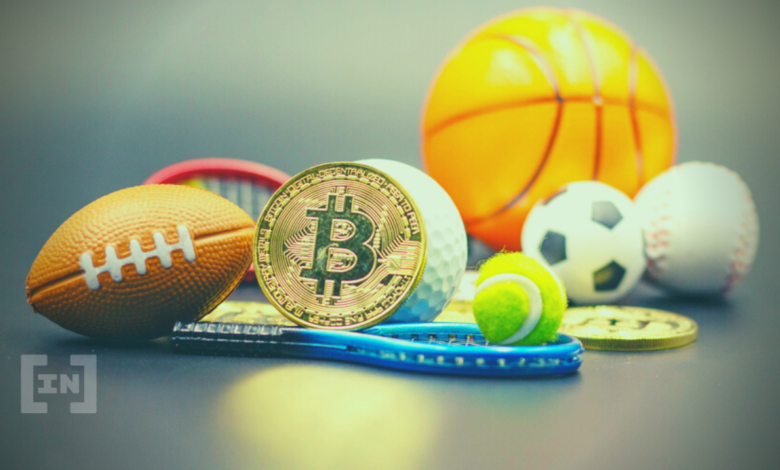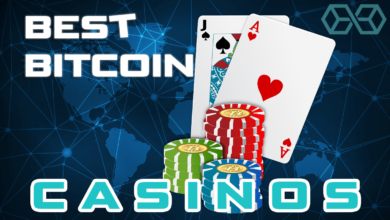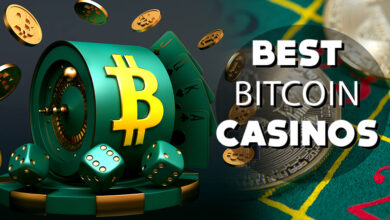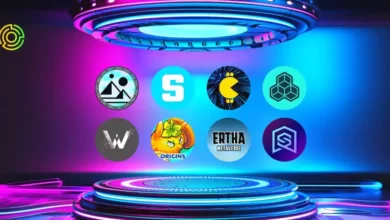Sports Betting To Crypto – It Offers Significant Benefits Over Fiat

Numerous industries have seen radical change due to blockchain technology and cryptocurrency. Digital currencies’ secrecy is one of the things that makes them attractive to online casinos and the gambling industry. The digital currency has many advantages, like safety, security, quick transactions, no conversion fees, etc. Given their popularity in the online casino sector, it won’t be long before bitcoin, and other cryptocurrencies are employed in sports betting.
Government authorities strictly regulate the use of digital currency for any such activity in numerous countries where sports betting is still illegal. However, the ability to track the transactions and records of the parties involved has almost become impossible with the introduction of cryptocurrencies and digital currency. Due to their outstanding level of secrecy and anonymity, cryptocurrencies are the ideal shelter for people who want to engage in online betting without being discovered by investigative authorities. According to actual data, more people are adopting cryptocurrencies for online gambling, and most casinos now accept them. Even physical casinos are not far behind in taking Bitcoin and other forms of payment.
In the U.S., there is increasing opposition against sports betting. The sports betting market in the U.S. is growing as more states legalize it. Blockchain betting has been strongly correlated with cryptocurrencies since it offers some benefits over betting with cash.
In the United States, many websites accept bitcoin payments for sports betting, but as more Americans become engaged, there are increasing voices of concern.
Since sports betting was legal in the U.S. in 2018, the sector has grown significantly. The industry’s revenues increased significantly from $4.3 billion for the entire 2021 period to $3.04 billion in the first half of 2022.
According to Morgan Stanley, sales are expected to reach $8.5 billion by 2025, which would give the industry a further boost. However, crypto enthusiasts are aware that increased income frequently coincides with rising scrutiny.
The 36th State Of Mind
On August 1, Massachusetts became one of the 36 states to authorize sports betting. In the U.S., less stringent regulation is the current tendency. Massachusetts is the third state to legalize this year after Maine and Kansas. California is expected to come after.
Sports leagues and advertisers stand to benefit from the changes. The NFL received a $1 billion sponsorship donation from FanDuel, DraftKings, and Caesars Entertainment for the 2020–21 season. Others in the group also pulled out their wallets. The remaining were WynnBet, BetMGM, Fox Bet, and PointsBet.
The excessively aggressive gambling promotion to sports fans has already angered some people. Co-director of the University of California’s Gambling Studies Program Timothy Fong worries that the company is preaching an ideal that is not attainable.
After someone shared a $10 parlay that won $180,000 on social media, Fong cautioned Grid that “this could be you. This is life-changing money.” In reality, though, this won’t be you.
Fong claims that this approach quickly satisfies customers despite downplaying or ignoring the risks involved.
The majority of the medical community appears to support this position. According to the Mayo Clinic, compulsive gambling “is a serious disorder that may destroy lives,” It can lead to several mental health issues, including despair and anxiety.
Crypto Heaven
Even if the entire market for sports betting is already huge, integrating cryptocurrency into this industry offers new benefits and opportunities. Transferring traditional currency money into and out of gaming sites isn’t always straightforward.
Crypto promises a system that is far more efficient. Earlier this year, the famous musician Drake bet $1.26 million in bitcoin on the Super Bowl. According to Anthony Pompliano, an industry specialist at the time, settlement times are shorter, and expenses are cheaper. From a technological standpoint, Bitcoin is superior.
Industry insiders share the same viewpoint. Greg Dean of HotStreak claimed in a recent interview with TechCrunch that “getting your money in and out is quite uncomfortable as rewards are related to outmoded payment methods.”
So it’s hardly surprising that the business community thinks the blockchain holds enormous potential. Cryptocurrency might open up a whole new world of gambling, but it might also provide its critics with yet another rod to beat it.
Cryptocurrency users are accustomed to being disparaged. Darknet marketplaces like Silk Road are the shred of reality that has allowed critics to exaggerate its ties to the international drug trade for years. A rise in American gaming may increase knowledge of and interest in cryptocurrency while connecting them to another purported social ill.
Do bitcoin proponents want to be linked to yet another social vice? Whether the answer is yes or no, the matter is somewhat academic. Thanks to decentralization, the convergence may be substantially stopped by government agencies alone.
Expansion & Decline
While the gambling industry is expanding in the United States, other countries face more challenging circumstances. The economies of Australia, Europe, and the United Kingdom are all stable or occasionally falling.
Although gambling has been legal in the U.K. since the 1960s, various industries are currently seeing a decline as a result of new regulatory constraints.
According to Morgan Stanley, the regulatory environment is decreasing in Australia and Europe while it is expanding in the U.S., which highlights long-term risk.
If the U.S. follows the U.K. example, advertising might be one industry where rules are strictly enforced. Federal regulations in the U.S. are used to limit the language that may be used, for example, to advertise casinos. It is very likely that in the future, businesses that offer sports betting may likewise be governed by similar laws.
Any restricting alterations, however, appear to be entirely speculative at this moment. Whether cryptocurrency and sports betting will succeed or fail in the future is up for debate.




